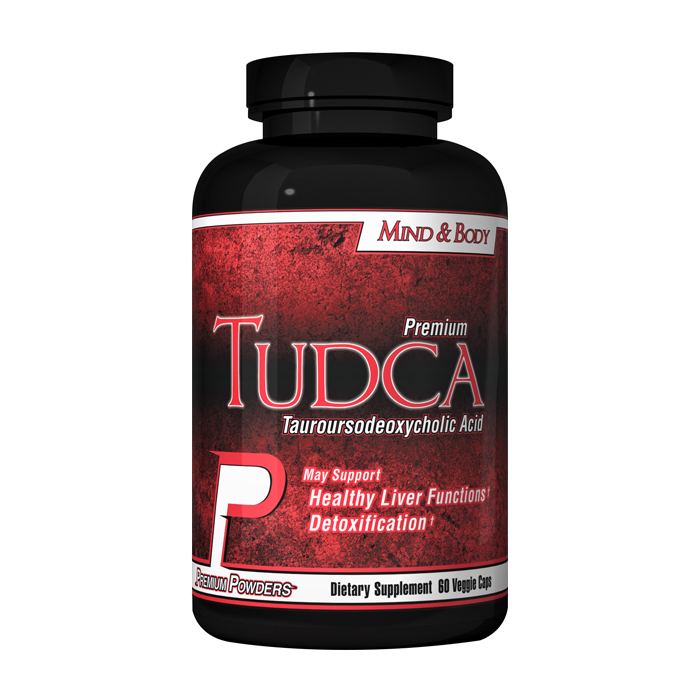Formula C26H45NO6S | Molar mass 499.7036 g/mol | |
 | ||
Tauroursodeoxycholic acid (TUDCA) is an ambiphilic bile acid. It is the taurine conjugate form of ursodeoxycholic acid (UDCA). Humans are found to have trace amounts of TUDCA. However, bears contain large amounts of TUDCA in their bile; UDCA and conjugates comprise about 47% of the bile in American black bears and up to 76% in Asiatic bears. TUDCA has been used in ancient Asian pharmacopoeias for its supposed beneficial effects. UDCA is produced in several countries for the treatment of gallstones and liver cirrhosis. It is not approved by the Food and Drug Administration, in the U.S. while UDCA is approved in the United States for the treatment of primary biliary cirrhosis Ongoing research is finding TUDCA has diminishing apoptotic effects, helping with cardiac function, Huntington's disease, Parkinson's Disease, and stroke. Recently, TUDCA has been found to have protective effects in the eye, especially concerning retinal degenerative disorders.
Contents
History
Chinese medicine has used animal bile for hundreds of years as a medicine to treat "heat" illnesses. It was used to relieve spasms, reduce fever, and improve visual acuity. Bile is naturally synthesized via cholesterol, consisting of compounds including taurochenodeoxycholic acid, ursodeoxycholic acid, and chenodeoxycholic acid. However, UDCA and TUDCA were first synthetically developed in 1954 in Japan.
Cellular mechanism
Apoptosis, or programmed cell death, is largely influenced by the mitochondria. If the mitochondria are distressed, they release the molecule cytochrome C (cyC). Cytochrome C initiates enzymes called caspases to propagate a cascade of cellular mechanisms to cause apoptosis. TUDCA prevents apoptosis with its role in the Bax pathway. Bax, a molecule that is translocated to the mitochondria to release cytochrome C, initiates the cellular pathway of apoptosis. TUDCA prevents Bax from being transported to the mitochondria. This protects the mitochondria from perturbation and the activation of caspases. TUDCA acts as a chemical chaperone.
Current research
Studies in recent years are continually showing ocular protective effects via TUDCA.
Photoreceptor cells
A study examined the effects of TUDCA on cones, in relation to retinitis pigmentosa (RP), a disease in which retinal rods and cones undergo apoptosis. Mice models were used, a wild-type and a mutant RP model, rd10. Both models were injected with TUDCA every 3 days from post-natal day 6 (p6) to p30 and compared to the vehicle. Electroretinography (ERG), photoreceptor cell counts, cone photoreceptor nuclei counts, and TUNEL labeling were all analyzed to show the effects of TUDCA. The dark-adapted and light-adapted ERG responses were greater in the TUDCA treated mouse than the vehicle treated mouse. TUDCA treated mice also had more photoreceptor counts, yet non-altered retinal morphology or function. Even at P30, a stage where rod and cone function is usually greatly diminished in the rd10 mouse model, the photoreceptor function was protected.
Another study, from the Department of Ophthalmology at Johns Hopkins University, in Baltimore, Maryland, saw similar effects in two components of bile, bilirubin and TUDCA, in relation to RP. Oxidative stress and prolonged light exposure were studied in rd10 mice and albino mice. In rd10 mice, intraperitoneal injections of bilirubin or TUDCA were given every 3 days starting at P6. This caused a considerable preservation in cone cell amount and function at P50, and a modest rod cell amount at P30. In the albino mice models, intraperitoneal injections of bilirubin or TUDCA were given prior to prolonged light exposure. Both treatments had positive effects on the health of the mouse retina, including a reduced accumulation of superoxide radicals, rod cell death, and disruption of cone inner and outer segments. The findings of the study are elucidating optimized conditions for RP treatment
Choroidal neovascularization
A study done at the Department of Ophthalmology at Seoul National University College of Medicine, examined the effects of TUDCA and UDCA on laser-treated choroids of rat models. Argon lasers were used to induce choroidal neovascularization (CNV) in rat models. TUDCA and UDCA were injected intraperitoneally 24 hours before and daily after the laser treatment. Fourteen days after laser-treatment, the eyes were examined for effects. Fluorescein angiography showed lower leakage from the CNV in UDCA and TUDCA treated groups than the control group. Additionally, vascular endothelial growth factor (VEGF) levels in the retina were examined and showed lower levels in the TUDCA treated group compared to the control group, whereas no effect in the UDCA treated group. TUDCA and UDCA may suppress CNV formation, which may be associated with its anti-inflammatory effects.
Synaptic connectivity
A study from the Department of Physiology in University of Alicante, in Alicante, Spain, shows the effects of TUDCA in the P23H transgenic rat, a model of autosomal dominant retinitis pigmentosa. The transgenic rats were injected with TUDCA once a week starting from P21 until P120, along with vehicle-administered controls. At P120, the functionality of the retina was examined via ERG and immunoflourescent microscopy. The amplitude of the a- and b- waves were considerably higher in TUDCA treated rats, compared to the control group. Photoreceptor density in the center of the retina was three-fold greater in TUDCA treated rats. Also, TUNEL results showed smaller amounts of TUNEL-positive cells. The synaptic contacts amongst photoreceptor cells, bipolar cells, and horizontal cells were preserved in the TUDCA treated P23H rats. Additionally, the synaptic terminals in the outer plexiform layer were of greater density that in control rats. The neuroprotective effects of TUDCA are not only preserving retinal morphology and function, but also its synaptic contacts, a potentially useful aspect in delaying RP.
